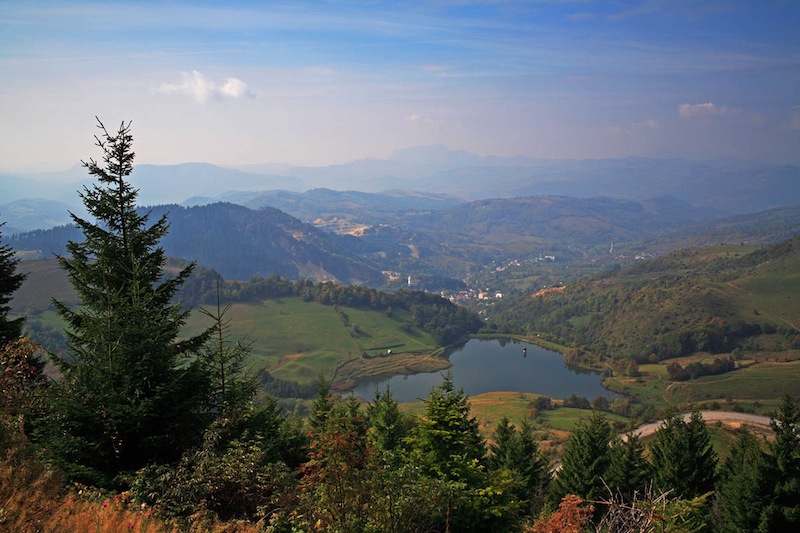Guest blog by Payal Sampat, International Campaigns Director for EARTHWORKS and originally posted on their EARTHblog.
Transylvania, Romania, is known for its fictional vampires — this is the region where Bram Stoker set his classic vampire novel, Dracula, in 1897. Over a century later, the region is threatened not by fictional vampires but a very real — and far scarier — monster: the Rosia Montana mine (translated by Google).
For the past 15 years, a junior, inexperienced Canadian mining company called Gabriel Resources has been attempting to construct a giant gold mine in the picturesque Transylvanian town of Rosia Montana. If built, it would be Europe’s largest open-pit mine, using cyanide to separate gold from ore. Mining experts have cautioned about the risks to people and the environment from the 250 million tons of contaminated mine tailings, much which would be stored in the densely populated neighbouring Corna valley. According to geophysicist Dr. David Chambers, if the tailings dam were to fail in the event of heavy rains, landslide or earthquake, toxic mining residues could be released into the Abrud River. Rosia Montana is a proposed UNESCO World Heritage site due to the archeological significance of the region.
Gabriel Resources has no track record with mining — it has never operated a mine before — and has spent 15 years and $550 million with little success in getting its project greenlighted. The project has faced widespread opposition, and prominent financiers, including the World Bank’s International Finance Corporation, have declined to fund the project due to concerns about pollution and relocation.
The opposition isn’t surprising, given the environmental concerns about the project, as well as Romania’s less than stellar history with gold mining. In the year 2000, the Baia Mare mine spilled cyanide-laced wastes into the Tisza and Danube Rivers, contaminating the drinking water supplies of 2.5 million people and killing 1200 tons of fish.
Gabriel Resources applied for a permit to develop the Rosia Montana mine in 1999 — but it has yet to be granted, 14 years later. Why are we still talking about it, you might ask?
The zombie lives to see another day
The new Romanian Prime Minister, Victor Ponta, wants to bring this zombie mine-that-won’t-die to life. He’s seeking “national priority status” for the $7.5 billion Rosia Montana project (along with fracking — but that’s a story for another day), declaring it in the national interest. It helps that the Romanian government holds a nearly 20 per cent stake in the project alongside Gabriel Resources’ 80 per cent.
Politicians and others may feel that poisoning a few small towns is in the national interest if it fills government coffers. (Romania is one of the most corrupt nations in the EU, according to Transparency International.) But not everyone agrees — in particular, many of those whose homes and health are most at risk from the mine.
There have been massive protests against the mine in Romania in the past few days and weeks, with thousands taking to the streets with signs saying “Save Rosia Montana” and “Cyanide Kills.” And today, Sunday, September 8th, protesters will march outside Romanian embassies around the world in solidarity with the Save Rosia Montana movement.
Apparently Transylvania doesn’t have vampires — it just has zombie mines that won’t die.
For more information:
Alburnus Maior: www.rosiamontana.org
Save Rosia Montana: rosiamontana.ngo.ro
Earthworks’ Rosia Montana page: www.earthworksaction.org
Goldman Prize: www.goldmanprize.org
Rosia Montana Valley. Photo: BAS Photography on Pbase.



